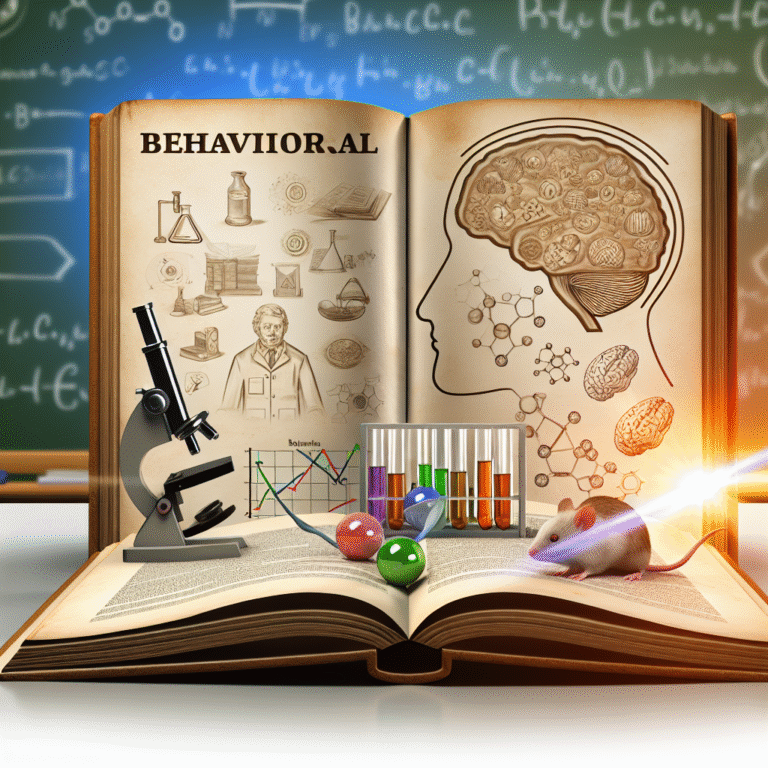
Behavioral Interventions 101: Essential Strategies for Supporting Autism Spectrum Disorder
Introduction: The Importance of Behavioral Interventions
In a world where the understanding of Autism Spectrum Disorder (ASD) is ever-evolving, the need for effective interventions has never been more critical. Behavioral interventions are at the forefront of strategies designed to support individuals on the autism spectrum, providing them with tools to navigate life more effectively. Behavioral Interventions 101: Essential Strategies for Supporting Autism Spectrum Disorder offers an insightful journey into the realm of these interventions. This guide will discuss the theoretical foundations, practical strategies, and real-world applications that underscore the importance of behavioral interventions for individuals with ASD.
Understanding Autism Spectrum Disorder
Before diving into behavioral interventions, it’s essential to grasp what ASD is. Autism Spectrum Disorder is characterized by challenges in social interaction, communication, and repetitive behaviors. Its symptoms can range significantly; some individuals may require substantial support, while others may be quite independent.
Case Study: The Many Faces of Autism
Take, for example, Alex, a 10-year-old who exhibits profound speech delays yet demonstrates an extraordinary ability to solve complex mathematical problems. Conversely, Emily, also 10, has obtained remarkable verbal skills but struggles with social cues, often misunderstanding sarcasm. Both children are on the autism spectrum, yet their needs and strengths differ significantly. This variability emphasizes the necessity of tailored behavioral interventions.
The Foundation of Behavioral Interventions
Definition and Principles
Behavioral interventions are rooted in behaviorism, a psychological approach that focuses on observable behaviors rather than mental states. The methods involve modifying behavior through reinforcement strategies, teaching new skills, and encouraging social interaction. Applied Behavior Analysis (ABA) is one of the most recognized frameworks for implementing these principles, emphasizing data collection and individualized programming.
Behavioral Interventions 101: Key Concepts
- Reinforcement: Positive reinforcement involves providing a reward following a desired behavior, increasing the likelihood that the behavior will occur again.
- Prompting: This includes verbal, visual, or physical cues to encourage desired behaviors.
- Modeling: Demonstrating acceptable behaviors for the individual to observe and imitate.
- Data Collection: Tracking progress to understand the effectiveness of interventions and modify them as needed.
Table 1: Key Behavioral Intervention Strategies
| Strategy | Description | Purpose |
|---|---|---|
| Positive Reinforcement | Rewarding desired behaviors | Increase frequency of behavior |
| Prompting | Providing cues or hints | Encourage independent responses |
| Modeling | Demonstrating desired behaviors | Teach social skills |
| Data Collection | Tracking progress | Assess effectiveness over time |
Essential Strategies for Supporting Individuals with ASD
1. Individualized Treatment Plans
Every child with autism is unique. An individualized treatment plan should take into account the child’s specific strengths, challenges, and interests. Parents and professionals need to collaborate to create a tailored strategy that aligns with the child’s personal goals.
Case Study: Tailored Strategies in Action
Consider Jordan, a 7-year-old who loves dinosaurs but struggles with transitions. His behavioral intervention team developed a plan incorporating dinosaur-themed visual schedules, allowing him to visually track his day. This strategy increased his adaptability and reduced anxiety.
2. Focus on Communication Skills
Many children with ASD face challenges in communication. Integrating communication-focused behavioral interventions—including speech therapy and social stories—can drastically improve their ability to express their needs and engage with others.
Analyzing the Case Study of Sam
Sam, a 9-year-old non-verbal child, was trained using Picture Exchange Communication System (PECS). Over time, he learned to exchange pictures for desired items, promoting effective communication. This intervention not only enriched his vocabulary but also enhanced his emotional well-being.
3. Social Skills Training
Engaging in social interactions can be daunting for children with autism. Structured social skills training—often conducted in small groups—encourages children to practice social scenarios, develop friendships, and improve their understanding of social norms.
4. Emotional Regulation
Teaching emotional regulation strategies is crucial for individuals with ASD. By implementing interventions such as mindfulness practices and coping strategies, those with autism can learn to manage anxiety and frustration more effectively.
Case Study: The Role of Mindfulness
Mia, a 12-year-old with ASD, found it difficult to cope with unexpected changes. Her therapist introduced mindfulness techniques, including deep breathing exercises. Over time, Mia learned to apply these strategies, significantly improving her emotional responses during stress.
5. Parent and Caregiver Training
Behavioral interventions are most effective when caregivers are involved. Training parents and family members in the underlying principles of behavioral strategies ensures consistency and reinforces learning at home.
Implementing Behavioral Interventions
Practical Steps for Effective Implementation
- Assessment: Conduct comprehensive assessments to identify specific needs and strengths.
- Collaboration: Engage an interdisciplinary team, including educators, therapists, and family members.
- Monitoring Progress: Regularly review data and adjust strategies as needed to ensure effectiveness.
- Ongoing Support: Provide continual support and resources for caregivers and families to maintain momentum.
Table 2: Steps for Successful Implementation
| Step | Description |
|---|---|
| Assessment | Identify needs through evaluations |
| Collaboration | Work with an interdisciplinary team |
| Monitoring Progress | Regularly analyze data and adjust strategies |
| Ongoing Support | Provide continuous education and resources |
Behavioral Interventions: Success Stories
Case Study: Achieving Independence
A group of teenagers with ASD participated in a life skills program emphasizing daily living skills through behavioral interventions. These teens learned to prepare meals, manage finances, and take public transport. With consistent reinforcements and real-world practice, they achieved newfound independence, demonstrating the effectiveness of tailored interventions.
Empowering Success Through Data
Using data collection and analysis, a behavioral intervention team discovered that students who participated in a research-based social skills program exhibited a 30% increase in peer interactions compared to those who did not. This highlights the importance of evidence-based practices in behavioral interventions.
Conclusion: A Path Forward
The world of behavioral interventions provides a robust framework for supporting individuals with Autism Spectrum Disorder. By tailoring strategies to fit unique needs, enhancing communication, and training caregivers, we can significantly improve outcomes. The journey doesn’t stop here; it’s crucial for parents, educators, and therapists to continue learning and adapting as new evidence emerges.
As you reflect on Behavioral Interventions 101: Essential Strategies for Supporting Autism Spectrum Disorder, remember that every small step taken can lead to monumental changes in the lives of those with ASD.
FAQs
1. What are behavioral interventions?
Behavioral interventions are therapeutic strategies focused on modifying specific behaviors through reinforcement and structured practices to support individuals with ASD.
2. How do I know if a behavioral intervention is working?
Monitoring progress through data collection can help assess the effectiveness of interventions. Look for improved communication, social skills, or emotional regulation as indicators of success.
3. Can behavioral interventions be applied at home?
Yes! Parents and caregivers can implement behavioral strategies at home, enhancing learning and consistency. Training programs are available to help families use these techniques effectively.
4. How important is individualized programming in behavioral interventions?
Individualized programming is crucial, as it caters to the unique needs, preferences, and strengths of each person with ASD, enhancing the likelihood of success.
5. Where can I find additional resources on behavioral interventions?
Numerous organizations, including the Autism Society and Association for Behavior Analysis, offer resources, training materials, and support networks to help families navigate behavioral interventions.
The journey through Behavioral Interventions 101: Essential Strategies for Supporting Autism Spectrum Disorder is one of empowerment. With dedication and evidence-based practices, we can make a profound difference in the lives of individuals with autism and pave the way for a brighter future.












